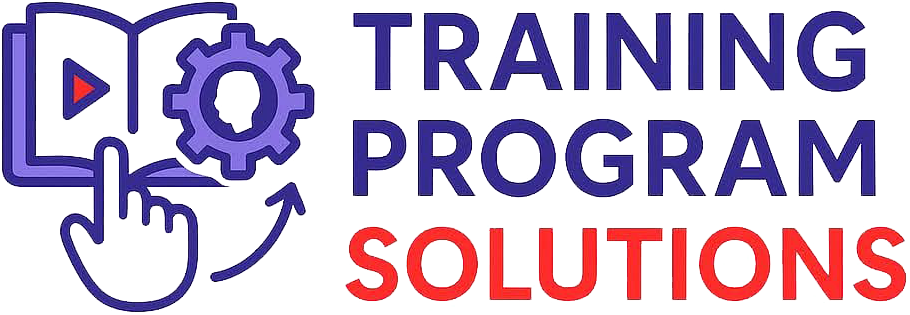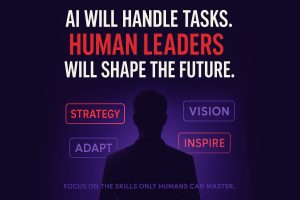In today’s fast-paced and ever-changing business environment, organizations face numerous challenges, from managing technological advances to navigating global markets. The key to overcoming these challenges lies in strong leadership. Leadership development isn’t just a nice-to-have; it’s a strategic necessity for organizational success. Here’s why investing in leadership development is essential for the growth and sustainability of any organization.
1. Navigating Change and Innovation
The ability to lead effectively through change is one of the most critical competencies in modern business. Markets, technologies, and industries evolve rapidly, and organizations need strong leaders who can not only adapt to these changes but also drive them.
Leadership development programs provide current and future leaders with the tools and strategies needed to manage change. Whether it’s fostering a culture of innovation, driving digital transformation, or pivoting during economic shifts, well-trained leaders will have the confidence and skills to guide their teams through uncertainty.
Leaders who can inspire their teams to embrace change and think outside the box help organizations stay ahead of the curve, ensuring long-term success and sustainability.
2. Cultivating a High-Performance Culture
Effective leadership is the cornerstone of a high-performance culture. Leaders set the tone for the organization, shaping its values, work ethic, and overall environment. Strong leaders inspire teams to give their best, foster collaboration, and create an environment of trust and accountability.
Leadership development programs focus on building the key attributes of high-performing leaders, such as emotional intelligence, decision-making skills, and conflict resolution. These skills are critical in motivating teams to exceed expectations and take ownership of their work.
As leaders continue to grow and develop, they model behavior for others in the organization. The more strong, capable leaders an organization has, the more likely it is that a high-performance culture will thrive.
3. Enhancing Employee Engagement and Retention
Employee engagement is one of the most important metrics for organizational success. Engaged employees are more productive, committed, and motivated to contribute to the company’s goals. However, fostering engagement requires more than just good pay and benefits; it requires strong leadership that understands and supports employee needs.
Leadership development plays a crucial role in improving employee engagement by equipping leaders with the skills to communicate effectively, provide constructive feedback, and create opportunities for growth. Leaders who invest in their teams, listen to concerns, and offer support are more likely to foster a positive work environment where employees feel valued and motivated.
Furthermore, organizations with strong leadership development programs tend to experience lower turnover rates. Employees are more likely to stay with companies that offer clear paths for growth and development, which in turn helps the organization retain its top talent.
4. Driving Succession Planning
Succession planning is essential for ensuring business continuity, but it can only be effective if organizations have a pipeline of skilled leaders ready to take on future roles. Leadership development plays a key role in preparing the next generation of leaders to step up when needed.
A strong leadership development program identifies high-potential employees early in their careers and nurtures their growth through mentorship, training, and challenging assignments. This proactive approach helps organizations avoid leadership gaps and reduces the risk of disruption when senior leaders retire or move on.
In addition, succession planning through leadership development ensures that leadership is distributed throughout the organization, rather than concentrated at the top. This decentralization of leadership strengthens the organization’s resilience and adaptability, helping it thrive in the face of challenges.
5. Building Stronger Teams and Collaboration
Leaders are not just decision-makers; they are facilitators of collaboration. Effective leaders understand the importance of building strong teams, fostering communication, and encouraging diversity of thought. By developing these leadership capabilities, organizations create a collaborative environment where team members feel empowered to share ideas, solve problems, and work together towards common goals.
Leadership development programs teach leaders how to manage different personalities, resolve conflicts, and create an inclusive environment where everyone feels valued. This not only improves team dynamics but also drives innovation and productivity. When leaders encourage collaboration and recognize the strengths of their team members, they unlock the potential for greater innovation and creative problem-solving.
6. Enhancing Organizational Agility
In a world where change is constant, agility is crucial for success. Organizations that can pivot quickly and respond to challenges with flexibility are more likely to stay ahead of their competition. However, agility starts at the top. Leaders must be able to make quick decisions, manage risk, and inspire their teams to act decisively.
Leadership development fosters critical thinking, strategic decision-making, and the ability to remain calm under pressure—skills that are vital for maintaining agility. Leaders who can navigate ambiguity and lead teams through periods of change ensure that the organization can move swiftly and effectively, without getting bogged down by uncertainty or indecision.
7. Achieving Long-Term Business Goals
Organizations set long-term goals for growth, profitability, and sustainability. However, achieving these goals requires more than just a strategic vision—it requires strong leaders who can execute that vision, align teams with organizational objectives, and ensure consistent progress.
Leadership development provides leaders with the tools to not only define and communicate the company’s strategic goals but also to lead by example in achieving them. When leaders understand how to break down long-term objectives into actionable steps, monitor progress, and keep teams focused on the bigger picture, they increase the likelihood of reaching those goals.
Additionally, strong leadership helps to instill a shared sense of purpose and direction, ensuring that every employee understands how their contributions align with the company’s overall mission and vision.
Conclusion
Leadership development is far from a luxury—it is a strategic imperative that drives organizational success. By investing in leadership development programs, organizations ensure they have the right leaders in place to navigate change, cultivate a high-performance culture, drive innovation, and ultimately achieve long-term goals.
As the business landscape continues to evolve, the organizations that prioritize leadership development will not only survive—they will thrive. Building strong leaders today ensures that companies are prepared for tomorrow’s challenges, positioning them for continued growth and success.
Organizations that invest in their leadership today will reap the rewards tomorrow. Let’s invest in leaders who will shape a better future for our organizations, teams, and communities.






